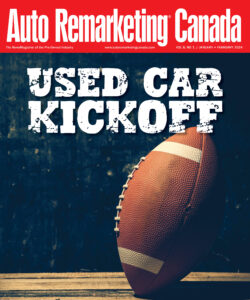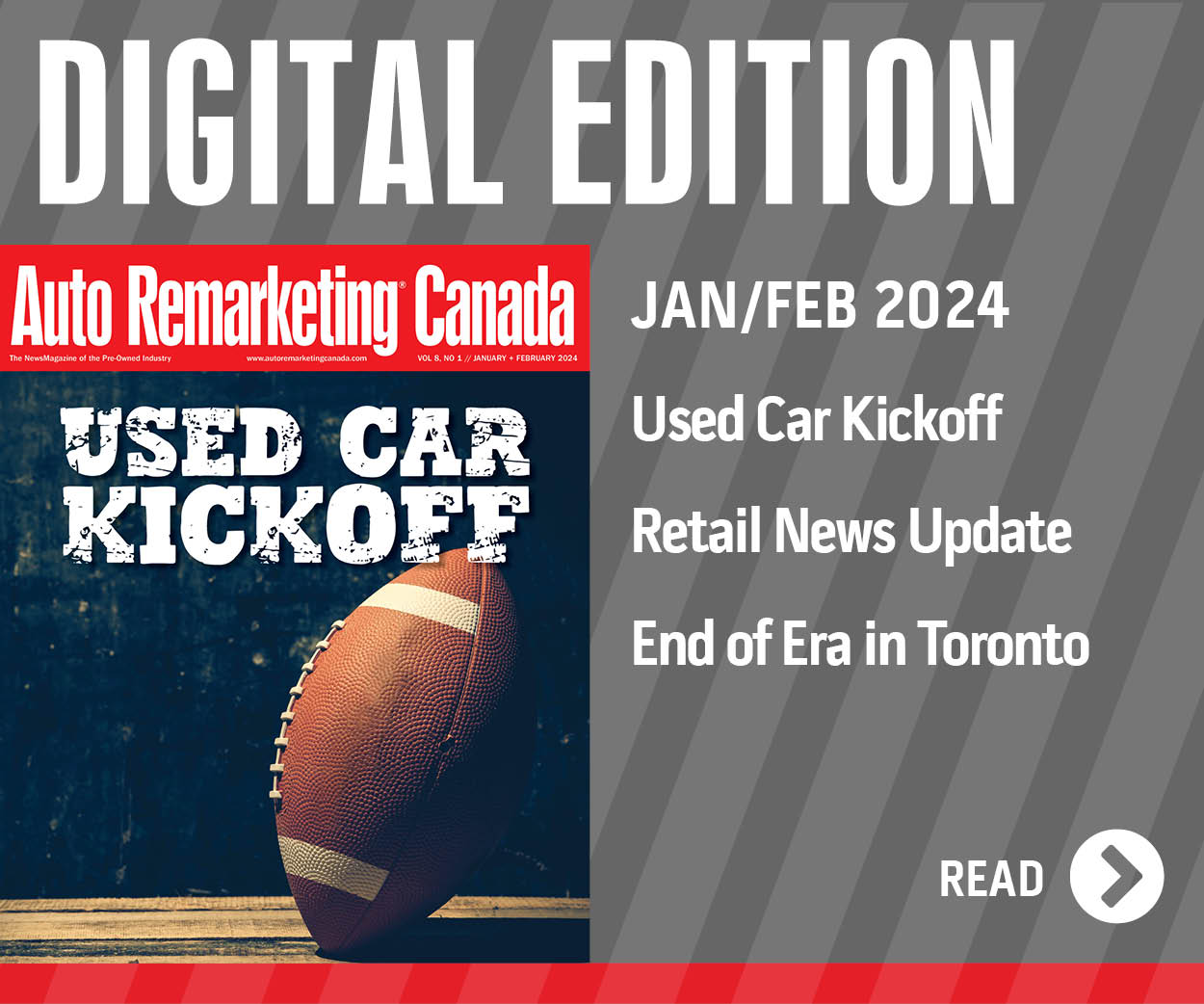Part II: How One Generation Changed the Marketing Game

In a two-part series, Auto Remarketing Canada covers the impact millennials are having on the automotive marketing landscape. What has changed? What still rings true?
Digital marketing experts, dealers and industry analysts discuss how best to reach and engage with a younger audience. Part I covered changes in motives for car purchases as well as meeting millennials where they are on the Web.
The second portion of the feature focuses on the importance of transparency to the younger generations, as well as what in-car technology is most attractive to millennials.
Lastly, Auto Remarketing Canada takes a look at how millennials are shifting marketing strategies for dealers and OEMs.
The Importance of Transparency
For millennials, the old adage, “If you always tell the truth, you never have to be afraid of getting caught in a lie,” rings particularly true.
That’s according to Michael Wyant, general sales manager at Vaughn Wyant Automotive Group and Auto Remarketing Canada dealer of the year, who said he uses that phrase often with his staff in regards to marketing.
“When you are selling a used vehicle, for example, there is no hiding anything. If it’s been in an accident, it’s been in an accident. And if you don’t disclose it and they find out, they (millennials) will absolutely scorch you in the social media world,” said Wyant.
Dealerships now have to be more upfront, which means everything from sharpening internal appraisal logistics, to marketing vehicles.
“Working with millennials requires 100-percent disclosure, and insuring that if you have an angry customer that contacts your or they do slash you online, in any sort of medium, you have to solve the problem,” Wyant said. “Some problems can’t be solved, but most problems can, and we have to make sure that we immediately put forth the effort to solve the problem to get a more positive outcome and review online.”
Many shoppers rely completely on referrals these days, which has changed the marketing game and shifted the social media tide.
Norman Hebert, vice president of corporate development at Groupe Park Avenue, contends millennials simply do not want to deal with negotiation — which ties into price transparency, as well.
“That is just something that has been easily taken out of their everyday life, just because of access to information,” he said. “And coming into a car dealership and having all this confusion around where a car could be priced at, it’s a bit confusing for them,” said Hebert.
“More transparency on the showroom floor is going to be really, really important,” Hebert said.
Hebert explained transparency on dealership websites is particularly important, and tricky calls-to-action can deter millennials.
“When a millennial clicks on check availability on your website, he or she expects not to see a form where they have to put in their name, they expect to see yes or no and how many,” said Hebert. “So, I think we need to be a bit cautious in what we are asking people to convert on.”
Remember those old contact form leads that had over 10 fields to fill out? Scrap those, or don’t make all questions required information.
And above all, don’t request information the millennial shopper hasn’t volunteered.
For example, if a millennial-age shopper submits a contact form and doesn’t give a phone number, it makes little to no sense to email them asking for their phone number.
“I don’t care if the communication is a Facebook message, an email, a Twitter message, or whatever, you just have to provide what the customer wants; because if you don’t provide it, you are not satisfying the customer experience and what their current expectations are,” said Wyant. “They have changed a lot, even in the last two or three years. It is dramatically different, and we have to accommodate people. Otherwise, they aren’t going to buy anything from us.”
Technology, Value Top of Mind
With the millennial generation, there are features that go far beyond racing to the bottom of the price barrel that will attract a potential sale.
Now, it’s more about why the product is better, said Wyant, and it revolves primarily around the demographic of vehicle buyers.
“The new Mercedes CLA buyer is going to respond a lot to that technological value-driven proposition a lot, where for people leaning toward a Mercedes ML, it’s a different message that you put out there,” said Wyant. “You really gear your marketing tactics toward that specific vehicle’s demographics, and you look at any of the stuff that appeals to the millennial demographic.”
For example, focusing on the technology side of the value proposition, rather than a more conventional price-based, conventional approach.
“This has been particularly popular with younger shoppers,” Wyant added.
Hebert proposed dealers focus on content regarding total cost-of-ownership and sales transparency in the car-selling process for this age group.
And when it comes to vehicle features, technology is always a draw for the younger crowd.
“They are interested in whether their smartphones connect well with their vehicles,” said Hebert. “And if you touch on this on-the-go lifestyle in some of your marketing videos, you will get some good hits with that kind of content.”
And millennials’ obsession with tech doesn’t fade away when they enter the dealership.
Initiatives from manufacturers to aid in ramping up tech in-stores, such as tablets for salespeople, have grown considerably over the last few years.
And at VWAG dealerships, Wyant said all sales staff have tablets, and Mercedes-Benz, Audi and Porsche, offer applications for the customers to use.
VWAG dealerships also tout flat-screen TVs that run a similar type of application, but through what Wyant called a “customer build center.”
“There is a customer lounger where you can build your vehicle on a big-screen TV, as opposed to even sitting at a desk an doing it on a computer with a salesperson. So it is a lot more interactive, 360-degree views of vehicles, changing colors, everything is real time, and the experience for the customer has been fantastic,” said Wyant.
Millennials Shifting Dealership Marketing Strategies
Many analysts agree that these days, marketing to millennials should be focused on the tier-one manufacturer level.
According to Wyant, most Gen Y shoppers have most likely already selected the vehicle they want before leaving the house, mostly via perusing OEM websites and automaker advertising and information.
Gone are the days of running newspaper ads and slashing your prices for Saturday-only sales.
“We haven’t been in the newspaper for over a year, and our business has not been affected in a negative way whatsoever except reducing our budget,” said Wyant. “You really have to look at what consumers want today. They want value, and they want to associate with a brand that they can relate to. That’s the responsibility on a tier one level.”
According to Wyant, the responsibility on a tier-three dealer level is to make sure dealerships have the right inventory marketed online.
“When the customer gets to the dealership website in that particular part of the purchase funnel, and they find the dealership has an optimal online experience, then they will be much more likely to connect directly with the store,” Wyant said.
“A responsive, optimized website saves customers time; that’s the most important thing these days. They walk into your dealership, and they know what they want,” Wyant continued. “There is no point in putting them through your typical eight-step selling process that we might have done 10 years ago.”
Millennials expect the process to be sped up, and this shift has changed dealership marketing tactics dramatically.
“Make sure the content on the website is current and detailed and relevant. So that when somebody does find you, they have a great experience online, which would then convert them into a showroom prospect and hopefully a sale,” Wyant concluded.
It goes without saying these days, the millennial shopper is searching for an optimal digital experience, which is important across all channels.
Hebert said dealerships also have to ensure the transition for shoppers from mobile to desktop must be smooth and fluid.
For example, millennial consumers expect to be able to save information and vehicles on their mobile and be able to transfer that information over to their desktop browser.
Hebert noted another important piece of the marketing puzzle for millennial shoppers is word-of-mouth.
“And word-of-mouth can come through channels like Facebook or online reviews, or simply through the traditional form of vocal communication,” said Hebert.
There is no disputing millennials are primarily searching for vehicles in the digital space. And transparency both in-store and online will continue to become more and more important as the generation continues to change the automotive buying and selling landscape.

 View The Latest Edition
View The Latest Edition

